Seaweeds − best called algae as they are not usually pest plants − are increasingly newsworthy. Browse through Chinatown food stores and they can be found advertised both as tasty additives to Asian cuisine and as healthfoods, providing Omega oils, iodine and potassium supplements to diets. If you find a number from 400 to 407 listed on your chocolate bar, milk drink, can, bottle or jar of food then the substance it denotes comes from a brown or a red alga. These algal additives keep food from separating out and looking “gluggy”.

Algae farm ponds in Whyalla, South Australia, used to produce β-carotene. Photo: CSIRO.
The bright red colour of some canned foods has almost certainly been improved by the addition of an extract of single-celled green algae that have oversized red eyespots made of carotene, similar to the stuff in carrots. It should be listed on the can as 160a.
A while back, information on green algae that can be cultured in order to extract biofuel was newsworthy, although the viability of such a scheme has its sceptics.
Recently, articles appeared about a red alga that lowers methane production by bacteria in ruminant livestock (cattle, sheep, goats) in Australia. Methane far exceeds the warming effects of CO2 on the atmosphere, so any decrease in the contribution of methane to the air by millions of ruminants would be most useful.. There are numerous articles available on this possibility but also some warnings about the alga’s potential toxicity.

Asparagopsis taxiformis (LEFT) and A. armata (RIGHT), Cape Peron, Western Australia. Photo: J. Huisman.

Magnified branches of A. armata: on the left, a fluffy vegetative branch, at right, a specialised, barbed grappling branch. Photo: B. Baldock.
So, what is this new “seaweed star”? A fluffy Red alga, about 250 mm tall, widespread in southern Australian and warm to tropic seas globally, probably introduced to the Mediterranean and Atlantic seas. It is Asparagopsis.
There are possibly 3 species, but one has been recorded only in 1945, so we can concentrate on the two common ones – Asparagopsis taxiformis and A. armata – that are being researched as methane suppressants.
Serious divers will recognise encounters with A. armata, its specialised barbed branches clinging annoyingly to wetsuits. Magnified, the effectiveness of the barbs in dispersing this species that lives attached to other algae – an epiphyte – can be appreciated. A. taxiformis is attached to hard surfaces, and has no barbed branches.
A surprising structural feature of both species is that they are made of threads or filaments, best seen under the microscope at tips of plants before the addition of cells that wrap or corticate the initial threads. These filaments can be found internally, even in mature branches, if a lengthwise section is investigated microscopically.

Asparagopsis armata, apical filaments (LEFT) and section through a mature branch (RIGHT). Photo: B. Baldock.
Perhaps more surprising about the two species is that they are sexual stages only. In Asparagopsis taxiformis both female and male structures are produced on the one plant, i.e. it is monoecious. Asparagopsis armata supposedly has separate male and female plants, a dioecious condition, but some question the reliability of this fact.

Asparagopsis taxiformis under the microscope: egg-shaped, coloured female structures with apical openings (cystocarp, LEFT) and small, cigar-shaped, white male structures near branch ends (spermatangial heads, RIGHT). Photo B. Baldock.
You may know that practically all Red algae have a life cycle that alternates between a sexual stage and an asexual or spore-plant stage. In the case of an Asparagopsis species, the spore stage is tiny, unobtrusive, epiphytic and so different to the sexual stages that originally it was thought to be a separate genus – Falkenbergia. It too has a thread-like construction, but largely lacks the cortication of the sexual phase.
Both stages of Asparagopsis – sexual and asexual – have been identified here and in the Mediterranean. Both sexual and asexual stages produce the methane inhibiting substance, bromoform. As the name implies, bromoform is analogous to chloroform (substitute Cl with Br in the formula). It too has a sweet, antiseptic smell like chloroform and has been synthesised in the past for industrial uses, including as a solvent, fire retardant and sedative. It may however have harmful effects on ozone, if released into the atmosphere, and possible carcinogenic effects.

Falkenbergia rufalanosa, the spore stage of Asparagopsis armata (LEFT), and viewed under a polarising microscope (RIGHT). Photo: B. Baldock.
As an economic retardant to ruminant methane production there are a lot of scientific and economic considerations to be made. Cropping of sporadic, naturally occurring populations of Asparagopsis would not be a viable proposition, but, fortunately plants can be grown vegetatively, so the focus of research now seems to be on aquaculture and the feasibility of doing this in vast saltwater land ponds required for the production of the quantities that would be required.
Commercial interests aside, Asparagopsis, with its intricate anatomy and cryptic life history, remains a fascinating red alga and worthy of investigation.
For additional descriptions and illustrations of species, see the following Algae revealed fact sheets:
- Falkenbergia – Step 7b and Figs 22-24 in the Filamentous red algae Master Key (2.6mb PDF)
- Asparagopsis armata (0.7mb PDF)
- Asparagopsis taxiformis (0.5mb PDF)
Written by State Herbarium Hon. Research Associate Bob Baldock.



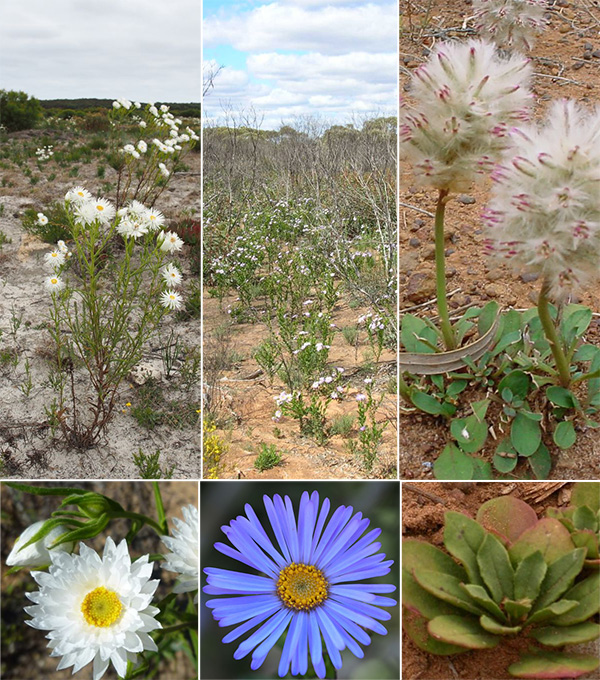
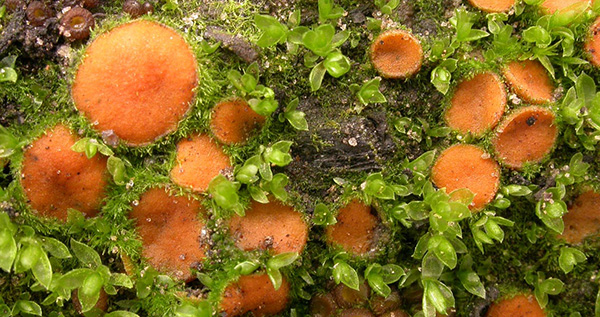
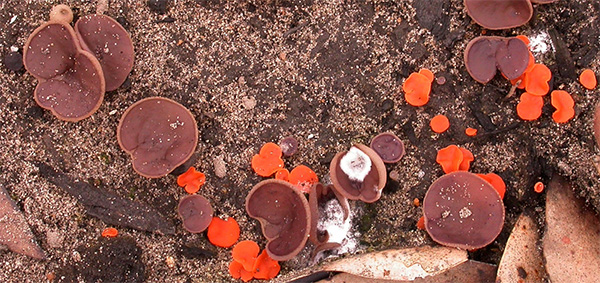



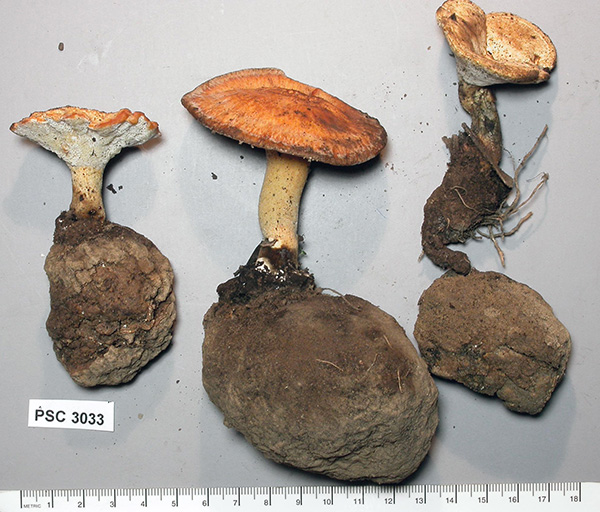
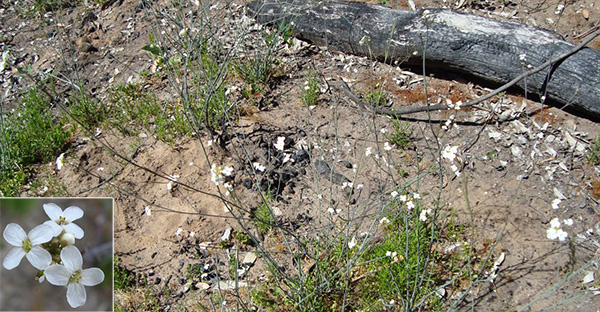
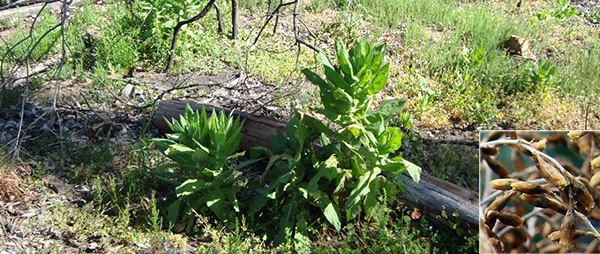
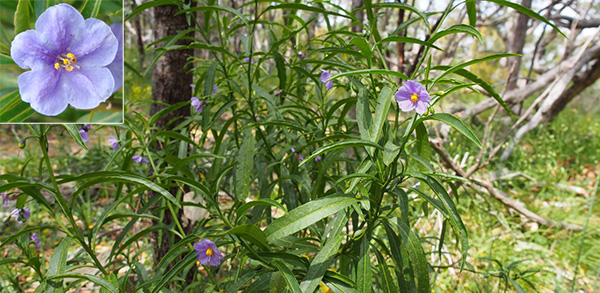






You must be logged in to post a comment.